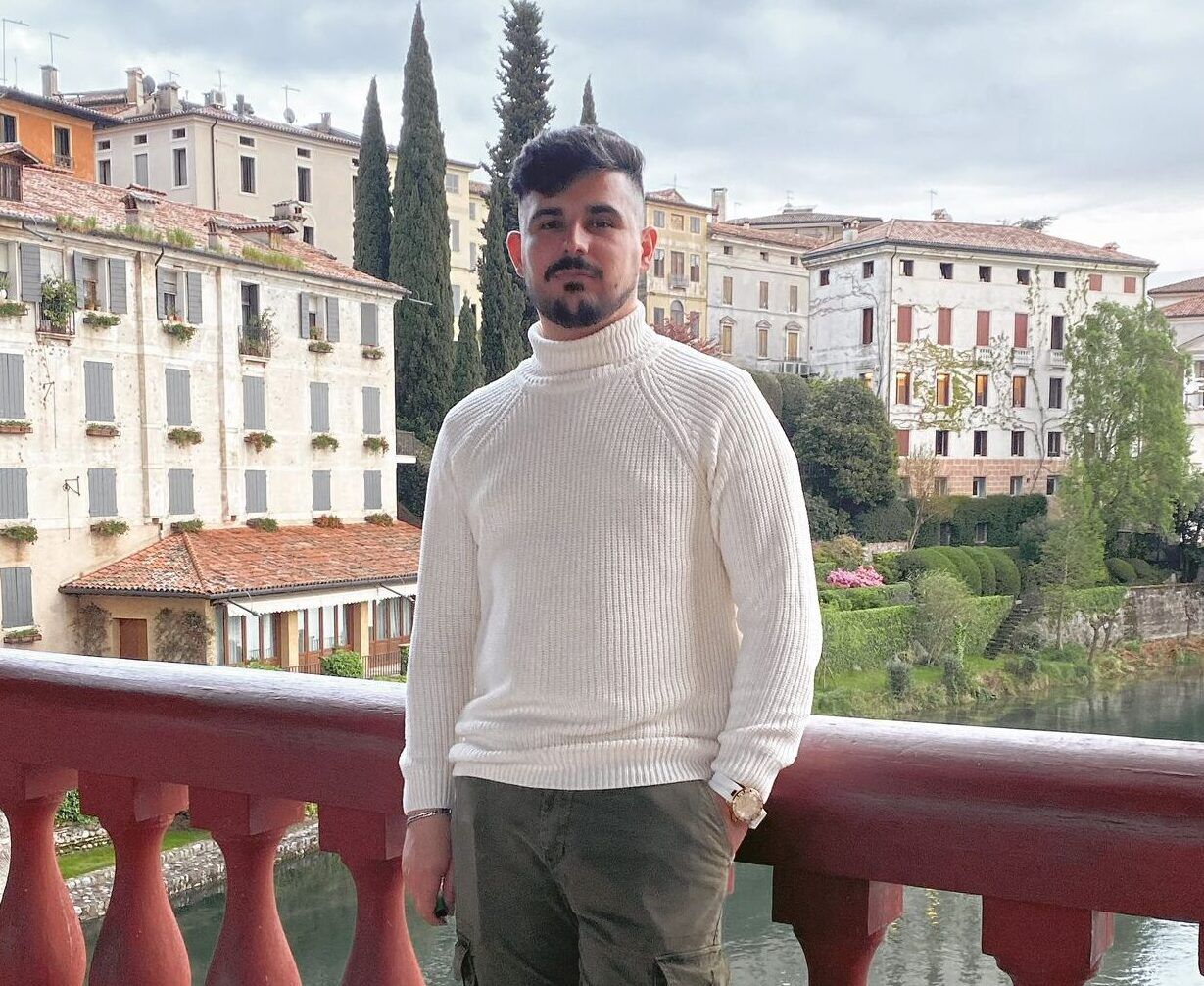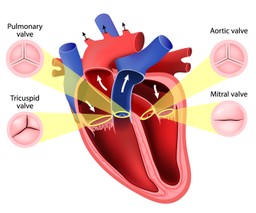What is Aortic Valve disease?
The human heart has four vales. There are two valves on the right side of the heart (tricuspid and pulmonary) and two valves on the left (mitral and aortic). The main valve that controls blood flow from the heart into your body is called the aortic valve. A normal aortic valve has three flaps, called leaflets, that open and close to control blood flow from the heart into the body. The aortic valve opens when the left ventricle (the bottom chamber of the heart) squeezes to allow blood to flow from the heart into the body. The aortic valve, between heart beats, prevents blood from flowing backward into the heart.
Aortic valve disease occurs when the aortic valve does not work properly. There are two types of aortic valve disease.
In aortic stenosis, the tissue that forms the leaflets of the valve becomes very stiff. This causes the opening of the valve to become very narrow and not open enough to allow blood to move from the heart into the rest of the body. The valve may become so stiff (stenotic) that it causes the heart to have difficulty working. It can put a lot of strain on the heart to try and pump hard enough to get blood through a stenotic valve. Blood flow to the body may even be reduced.
Aortic regurgitation, also known as aortic insufficiency, aortic incompetence, or “leaky valve,” occurs when the valve does not close all the way and allows blood to “leak” backward into the heart.
If your symptoms are severe, your doctor may recommend surgery to repair or replace your aortic valve.1
Currently, there are no medications to cure aortic valve disease. Surgery is the most common treatment.2
How is aortic valve disease treated?
Aortic Valve Repair and Replacement
There are different options available to repair or replace an aortic valve. A surgeon may recommend a treatment, but the choice of which type of valve replacement is ultimately up to the patient and which valves fits their lifestyle best.
Aortic Valve Neocuspidization (AVNeo™ procedure)
AVNeo (also known as the Ozaki Procedure) has several advantages when treating aortic valve disease. The surgeon will remove all of the diseased parts of a patient’s aortic valve. They will then use the patient’s pericardium (sack around the heart) to create the new flaps (leaflets) for the new aortic valve, if there is sufficient pericardium left that can be used.
AVNeo allows natural movement of the aortic annulus (the base of the aorta that attaches to the heart) and creates natural blood flow through the aortic valve, causing less stress on the left ventricle. By using a patient’s own tissue, there is less chance of having an adverse reaction to the new valve. There is no need for anticoagulation (blood thinning medication) which allows patients to continue an active lifestyle.
Transcatheter Aortic Valve Replacement (TAVR)
This procedure does not require open heart surgery. It is less invasive, which means there is not an incision to open a patient’s chest. The surgeon will use an artery in a patient’s groin or chest to insert a tube (catheter) and feed it into their heart where a new valve will be placed inside of the old aortic valve. The new valve will inflate and push the diseased leaflets out of the way. The catheter is then removed after the valve is placed in the correct position.
This procedure was originally used only for patients who were too high risk to have a traditional aortic valve replacement. Not every patient is a candidate for this procedure, but it can now be used for intermediate to high-risk patients.
Surgical Aortic Valve Replacement (SAVR)
During traditional surgical aortic valve replacement, the patient will undergo open heart surgery. A surgeon will make an incision in the patient’s chest, remove the diseased or damaged aortic valve, and replace it with a mechanical valve or a biological (cow or pig) valve. Biological valves degenerate quicker than mechanical valves and may need to be replaced. People that have mechanical valves will need to do anticoagulants or “blood thinning” medication.
Surgical operating team performing thoracic surgery in modern hospital, health
How AVNeo is performed?
During surgery, the pericardium (the tissue that surrounds your heart, which is commonly used for other procedures, will be removed from the patient and placed in a chemical called Glutaraldehyde. This is a similar process like tanning leather to make your pericardium stronger to create the new valve.
The original valve will be removed and the tissue surrounding where the new valve will be created will be cleaned to allow for the new valve to be sutured in properly. Once the diseased leaflets are removed, the size of valve will be measured so that the surgeon can create a new valve which is sized specifically to you. Using the patient’s own pericardium, the surgeon will cut out the specific leaflet size using a template. The shape of the leaflet that will be created is based on more than ten (10) years of clinical data.3
Surgeons that perform the AVNeo procedure have gone through a comprehensive training course.
View the Patient Brochure from here.
References
- https://my.clevelandclinic.org/health/treatments/16745-aortic-valve-surgery
- https://www.heart.org/en/health-topics/heart-valve-problems-and-disease/understanding-your-heart-valve-treatment-options/medications-for-heart-valve-symptoms
- Ozaki, et al J Thorac Cardiovasc Surg, Midterm outcomes after aortic valve neocuspidization with glutaraldehyde-treated autologous pericardium J Thorac Cardiovasc Surg 2018;155:2379-87
Patient stories

AVNeo surgery and its many advantages compared to others
I was drawn to the many advantages that the AVNeo procedure has when researching different heart valve surgeries. You do not need to take blood thinners and your immune system does not reject the valve because its your own tissue. My mid-term results were excellent. Overall, I am very happy with my surgery.
J. B | Italy


